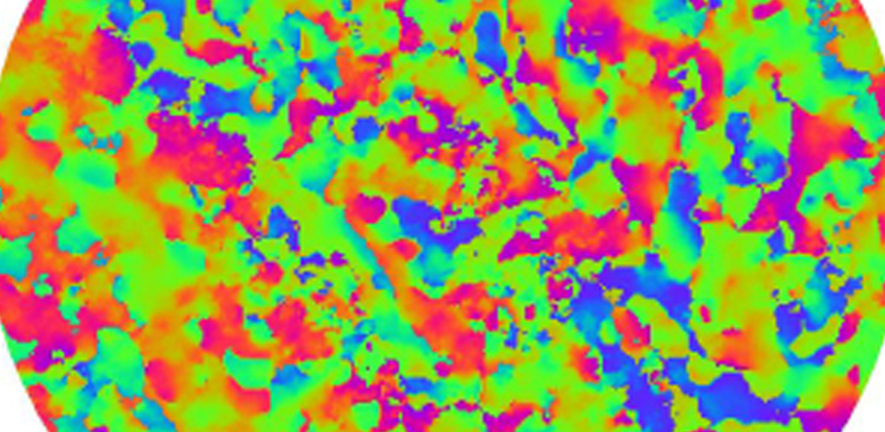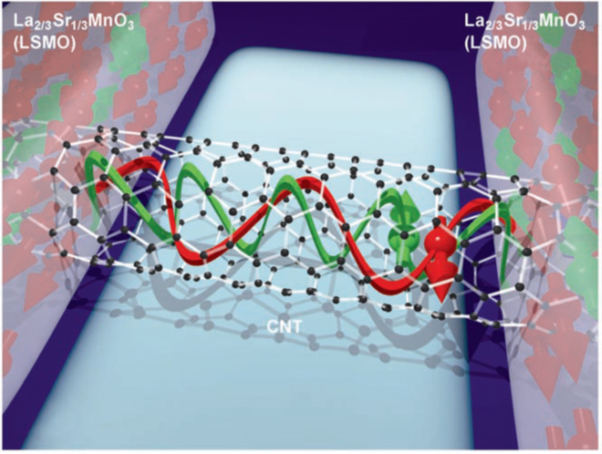
Devices can be used to peform some useful function (such as data storage), but they can also be used to test the physics of materials and combinations of materials. The resulting contribution to basic scientific knowledge is an intrinsically important goal that also leads to better functionality, and thus improved performance in applications.


Spintronics
The ability to send spin-polarized electrons through a non-magnetic channel running between ferromagnetic electrodes could be exploited in future logic and memory devices with low power consumption. Having previously shown that a carbon nanotube can carrry spin-polarized electrons without significant depolarization, attention is currently focussed on its well known allotrope graphene.
The image to the left shows carbon nanotube (CNT) between manganite electrodes of LSMO [A. Fert, Angew. Chem. Int. Ed. 47 (2008) 5956].
